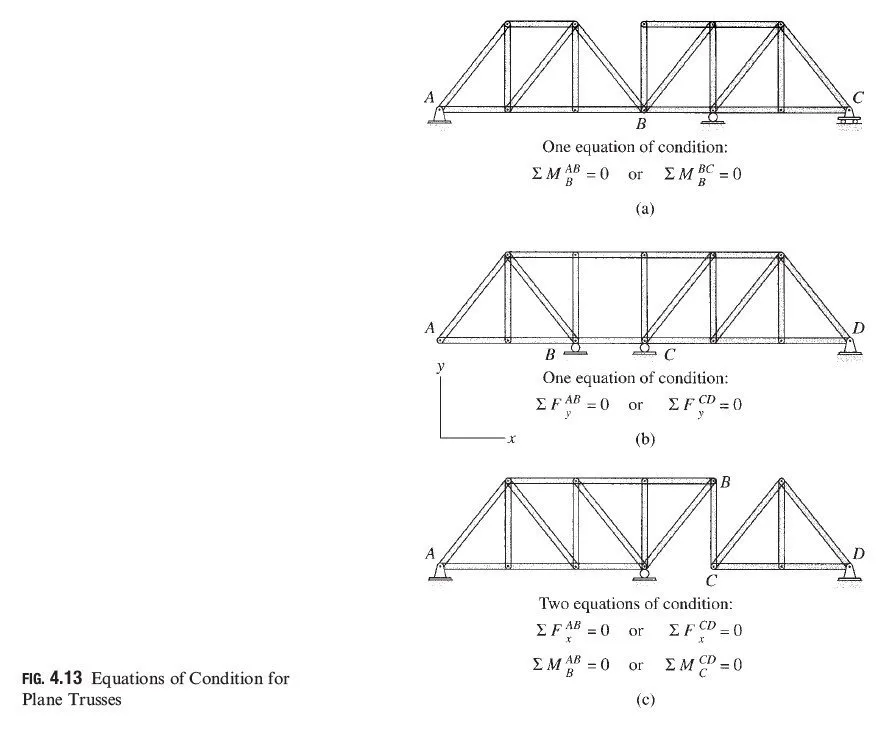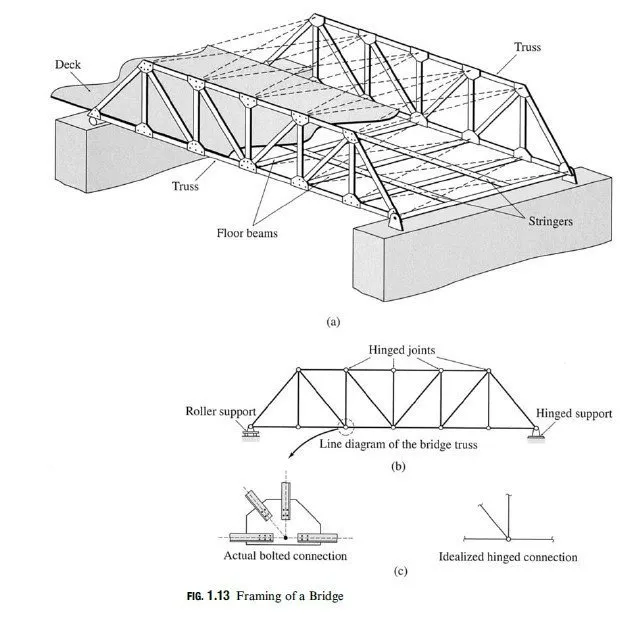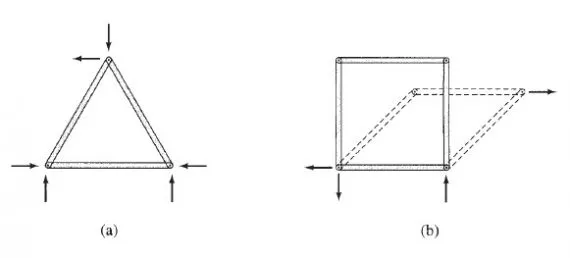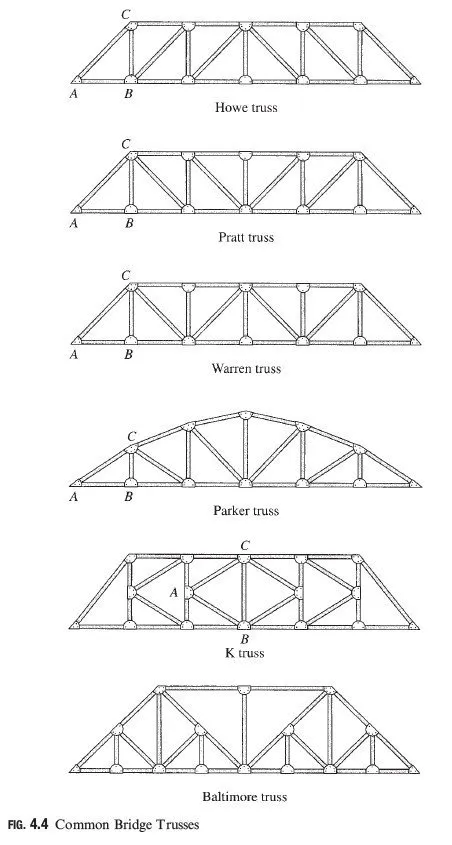In Section 3.4, we indicated that the types of connections used to connect rigid portions of internally unstable structures provide equations of condition that, along with the three equilibrium equations, can be used to determine the reactions needed to constrain such structures fully. Three types of connection arrangements commonly used to connect two rigid trusses to form a single (internally unstable) truss are shown in Fig. 4.13. In Fig. 4.13(a), two rigid trusses, AB and BC, are connected together by an internal hinge at B. Because an internal hinge cannot transmit moment, it provides an equation of condition:
Another type of connection arrangement is shown in Fig. 4.13(b). This involves connecting two rigid trusses, AB and CD, by two parallel members. Since these parallel (horizontal) bars cannot transmit force in the direction perpendicular to them, this type of connection provides an equation of condition:
A third type of connection arrangement involves connecting two rigid trusses, AB and CD, by a single link, BC, as shown in Fig. 4.13(c). Since a link can neither transmit moment nor force in the direction perpendicular to it, it provides two equations of condition:
As we indicated in the previous chapter, these equations of condition can be used with the three equilibrium equations to determine the unknown reactions of externally statically determinate plane trusses. The reader should verify that all three trusses shown in Fig. 4.13 are statically determinate externally.




